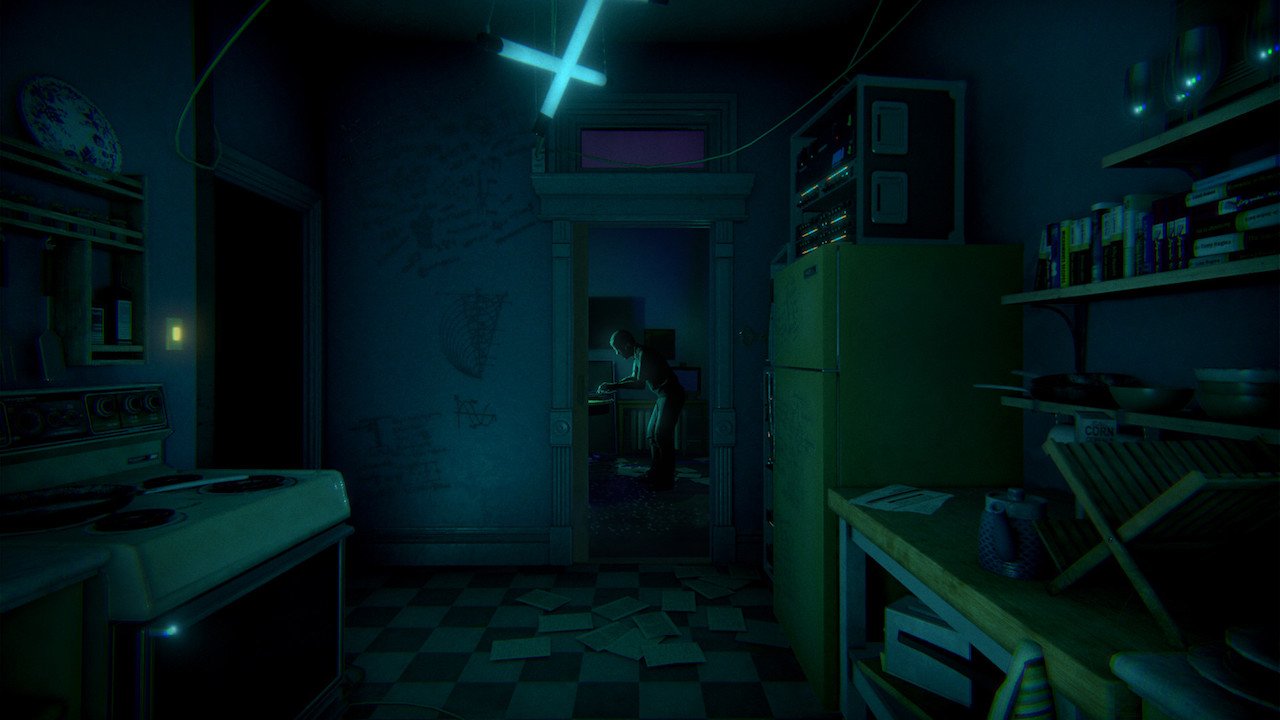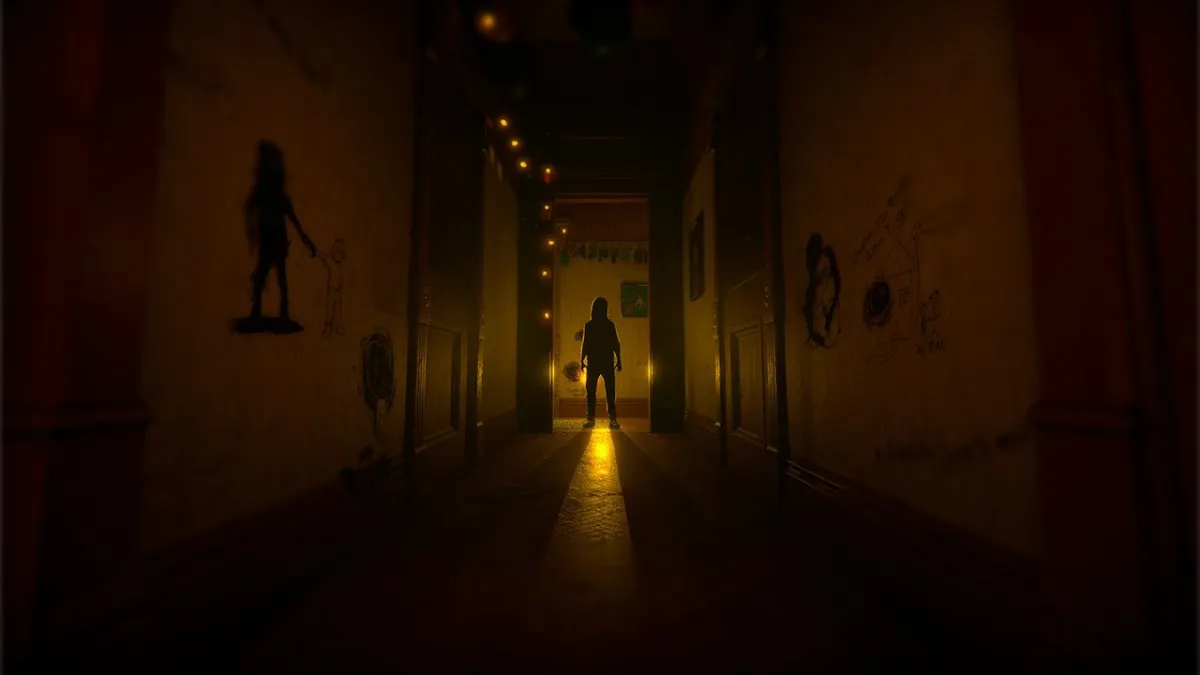Earlier this year at E3, one of the games that I got to check out the demo of was Transference, a psychological thriller made in collaboration with Ubisoft and Elijah Wood’s horror/thriller movie company SpectreVision. At the time, I was impressed by the game’s concept and ability to immerse its players, though I worried if the narrative would end up being as fleshed out as I hoped it would be in the final product. And now that I’ve played the final product, my feelings toward the game are mostly the same.
The teams behind Transference describe it as being somewhere in between video games and movies, as it encapsulates the interactivity of the former and the narrative-driven aspects of the latter. This isn’t really anything new since narrative-driven video games have been around for a while now, with the walking simulator genre in particular (think Gone Home, The Stanley Parable, and What Remains of Edith Finch) becoming popularized in the past decade or so. So Transference may not be breaking new ground, but that may not matter as long as it successfully does what it and other walking simulators try to do, which is to add a new level to straight-forward, linear narratives through player interactivity.
The general vibe of Transference is one that is pretty cool. There’s definitely an element of horror in there, and you’ll likely always be a little bit nervous every time you’re about to open a new door (at least in your first playthrough). The visual glitches and creepy sound design make for quite an unsettling setting and that alone immediately makes the world of the game somewhat interesting. This game is also available in VR via PlayStation VR, Oculus Rift, and HTC Vive, so that’s also an option if you want to fully immerse yourself in this unnerving space.
The puzzles in this game are probably the best part about it.
As walking simulators do, Transference largely tells its story through environmental storytelling, making the player figure out what’s going on not by watching cutscenes but by finding clues in various locations that fill them in on what’s happening. This game has a very interesting way of going about this as the player will have to travel between different characters’ consciousnesses to fully figure everything out. In the world of the game, Dr. Raymond Hayes has created a technology that allows for the virtual replication of people’s consciousnesses, letting someone else travel through another person’s recreated memories of a place. So in Transference, the player travels between the consciousnesses of the three members of the Hayes family, viewing how each member of the family differently remembers their apartment at different points in time, allowing the player to collect different environmental clues based on whose consciousness they’re inhabiting at the time. It’s a really cool mechanic that makes for some interesting puzzles, where the solution to a puzzle in Raymond Hayes’ consciousness may lie somewhere in his son, Benjamin Hayes’ consciousness.

In fact, the puzzles in this game are probably the best part about it. There are some puzzles that are absurdly easy, but for the most part these puzzles are interesting and at least somewhat engaging, and it is always satisfying figuring out the solutions to them. Plus, it gives the player something to be engaged in when the narrative aspect of the game doesn’t pull its weight.
Which brings me to my next topic, the game’s story. The narrative of Transference is very simple. Dr. Hayes has been working on this consciousness-transferring technology and finally finished it. You, the player, are using this technology to see the impact that Hayes’ obsession with his work has had on his family. And that’s about it. You obviously find out more specifics as you go along, but there aren’t really any big twists or reveals or even much of a resolution. You’re simply presented with the state of the Hayes family and continually given more details about it, but it feels more like an unmoving plot point, rather than a full, flowing narrative. Which is a shame, since exploring interesting narratives is kind of the whole point of the walking simulator genre. There are also collectible video logs hidden around the game which you can watch later, but they really just serve to further beat the player over the head with information they would have already figured out by just playing through the game, rather than offering anything new, interesting, or particularly substantive. And the fact that much of the game’s writing and performances range from fine to unbearably cheesy didn’t help.
[The story] feels more like an unmoving plot point, rather than a full, flowing narrative.
Another thing worth mentioning about Transference is its length. Ubisoft has stated that most playthroughs of the game lasted from two to three hours, but I got through it in an hour and a half. And I’m the kind of person who generally tries to explore the environments of narrative-based adventure games as much as I can. On one hand, it makes sense that SpectreVision, a company that primarily makes movies, would make a video game that’s about movie-length. But on the other hand, $25 seems like a bit much for a game that you can beat in an hour and a half and theoretically 100% (finding all the video logs, etc.) in maybe two hours. It seems that most walking simulators cost more like $15-$20, which makes more sense since that’s about how much a new movie (a medium that tends to also provide about two or three hours of entertainment) would cost. So this game costs a little bit more, but doesn’t exactly make it up in narrative quality or anything. Obviously, it will be up to each gamer if they think this game is worth that much or not, but personally, I feel like it probably should be a bit cheaper given what the player is receiving.

The Verdict
There are definitely things that Transference has going for it. The atmosphere is cool, the concept is interesting, and the puzzles are fun. The story, however, may be just interesting enough to get the player through the game, but won’t exactly provide any kind of profound insight into the state of interactive narratives. It’s a game worth checking out (though you might want to wait for a sale), but is far from the great narrative experiences other walking simulators have come to be known for.











Published: Sep 17, 2018 08:14 pm